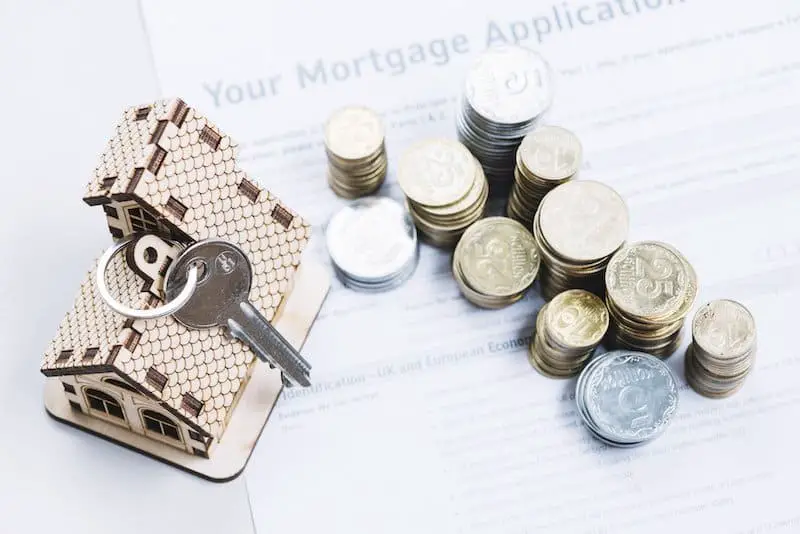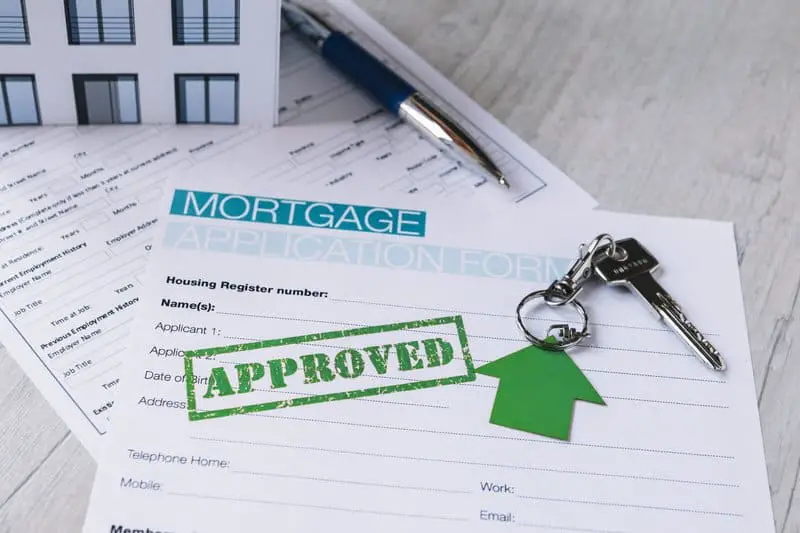There’s no greater feeling than buying your first house. But it’s a serious investment that can be overwhelming, especially if you’re not well familiar with the process.
The first step toward purchasing a house is determining how much house you can afford. Next is saving for a down payment and getting pre-qualified for a mortgage. This includes giving your lender your financial information and them determining the amount they can lend you.
Finally, you find a house you love, buy it and spend your best years there.
But it’s not all rainbows and butterflies. No one gives you free money. Mortgages come with interest, meaning you must pay to use the money.
Historically mortgage interest today is at the lowest compared to decades ago. Our ancestors had to pay more than 10% interest on their mortgage. Depending on the payoff frame, today, we pay roughly less than 4% interest on mortgages.
Mortgage interest was a hard pill for me to swallow. I know almost no one buys houses in cash but calculating the interest we’ll pay was surprising. We conducted thorough research on getting the best offer and ended paying a third of our apartment’s price in interest.
Let me paint you a picture of how much mortgage interest is in real money. We recently bought an $80,000 apartment with a 15-year mortgage. We put in a $16,000 down payment. Our monthly mortgage payment comes at around $435. After 15 years, we would have paid $78,300 for our mortgage. In the end, our apartment will cost us roughly $94,300, and $14,300 of that sum is interest. Tax and insurance are not included in this calculation.
Mortgage interest is the interest charged on the loan you take to buy a property, and it’s calculated as a percentage of the full loan you take. The formula is loan balance x yearly interest rate = the interest amount for the year. It’s recalculated each month because your loan decreases with each payment.
What Is Mortgage Interest?

Interest is the “rent” you pay to the lender for using their money to buy a property. If you rent a car for 15 days, you’ll pay less than if you hire it for 30 days, right? So if you pay off a loan in 15 years, you’ll pay less interest than if you pay it off in 30 years.
Mortgage interest is lower than personal loan interest because personal loans are unsecured, meaning the lender is exposed to higher risk.
With mortgage loans, your property serves as collateral, so the interest is significantly lower.
How Is Interest Calculated On A Mortgage Payment?

It can be complicated to understand how mortgage interest is calculated, but every future or current homeowner must understand it. If you decide to purchase or sell a property, you need to be familiar with what you might owe and where your money is going each month.
The money the lender gives you to buy the property is the principal balance. Each month you have a mortgage loan payment. Part of that sum goes to your principal balance payoff, and the other part is mortgage interest.
Monthly Mortgage Interest Example

Let’s take my property as an example. So we took off a mortgage of $64,000. Our annual mortgage rate is 2.8%.
We’ll multiply the principal amount by the annual interest rate.
$64,000 x 2.8% = $1,792. We owe $1,792 in interest rate.
When divided by 12 months, we get our monthly interest, and that’s $150.
Our monthly mortgage payment is $510; when we subtract the monthly mortgage interest, we’re left with $360, and that’s what goes towards our principal payoff.
Principal balance – one month principal pay off = $63,640 remaining.
Fast forward a month later, we multiply the remaining mortgage sum times the interest rate; $63,640 x 2.80% = $1,782.
The new interest rate divided by 12 months gives us the new monthly interest.
$1,782 / 12 = $149
Again, our monthly payment is $510 minus the monthly mortgage interest; it leaves us with a $361 payment towards our principal balance.
After two payments, we have $63,279 left of our mortgage.
Daily Mortgage Interest
Let’s say the third month of your mortgage repayment, an investment you made brings you enough revenue to pay off the mortgage in full. But it’s the middle of the month; how do you know how much interest you owe?
We have $63,279 of the mortgage remaining. The annual rate is $1,772, and the monthly interest comes at $148. Divided by 30 days, or daily interest rate is $5.
If you want to close the mortgage on the 15th of the month, you need to pay your lender $63,279 plus an additional $75 for 15 days of interest.
Mortgage Amortization Schedule Explained
If your mortgage decreases with each payment, why do monthly payments stay the same? Don’t get confused.
Monthly payments stay the same, but the money distribution is not the same. As your mortgage amount decreases, the interest amount is lower, so a more significant portion of the money goes towards the mortgage repayment instead of interest.
A quick look at a generic amortization schedule will give you an example of how principal repayment and interest are combined to keep the same monthly payment till the end of the loan term.
How Extra Mortgage Payments Affect The Interest Rate

Contributing extra towards your mortgage is fantastic if you can afford it. It means you’ll be debt-free faster and you’ll pay less interest.
If your monthly rate is $510 and you have an extra $300 to add this month, that money goes to paying off your principal balance. So the next month, you’ll pay lower interest than suggested since you lowered the principal balance amount.
If your financial situation improved significantly and you can commit to larger monthly payments, it’s better to look into refinancing. It’s a great way to lower your interest, which leads to saving time and money.
Mortgage Calculators

Banks and other lenders have simplified mortgage calculators that can give you an example of how much you’ll pay in monthly installments. They’re created to quickly paint a picture of how much house you can afford and for how many years to stretch out your loan.
Mortgage calculators include not only principal and interest that we discussed but two other components to the mortgage payment, tax, and insurance.
What Is PITI
PITI is the abbreviation for Principal, Interest, Tax, and Insurance. You know principal and interest; let’s explain the tax and insurance part.
Tax on real estate is determined and charged annually by the local government. You can include them n your monthly mortgage payment. Your lender can collect the tax into your yearly mortgage installments, hold it and pay it to the local government when it’s due.
Depending on your type of mortgage loan, there are two types of insurance. Private mortgage insurance is obligatory for those who buy a property with less than 20% down payment and homeownership insurance that protects your home from fire, robbery, and other unfortunate events. The same as property tax, insurance payments can be collected with the mortgage payments and held until the due date.
Late Mortgage Payments And Interest
Being late on a mortgage payment does not affect the interest rate.
If you fail to pay your mortgage in time, you owe late fees. They’re determined by your lender and are a percent of what you owe. This has nothing to do with the percent of interest you pay on your mortgage.
It’s essential to choose a comfortable payment plan that you can stick to it. While short term loans have better, lower interest rates, they also have higher monthly payments.
Today’s Mortgage Interest Rates Are The Best

I did mention how today we enjoy lower interest rates on mortgage loans, but precisely how much lower? Let’s take a look at the annual averages in the given year.
- In 1975, a 30-year mortgage came with a 9.05% interest;
- In 1985, a potential homeowner had to pay 11.48% interest on a 15-year mortgage and 11.85% on a 30-year mortgage;
- In 1995, the prospective homeowner paid 7.48% interest for a 15-years mortgage and 7.93% on a 30-year;
- In 2005, we had interest rates of 5.42% and 5.87% for 15 and 30 –year mortgages accordingly;
- In 2019, the annual average for a 30-year mortgage was 3.94%, and for a 15-years was 3.39%.
Why, despite the historically low-interest rates, it’s still hard for young adults to buy a house? Well, prices of real estate have grown significantly.
A median home value in 1990 was $79,100 while in 2010 it was $221,800, almost triple the value. Meanwhile, the median household income has grown only by $20,000, making it more challenging for young families to afford to buy a house.
Bottom Line
You don’t have to be a specialist or math expert to work out your mortgage payment interest. You need to get accurate information from your lender and exercise your brain a little.
It’s essential to follow mortgage interest development. Rates are usually not fixed for more than five years. If they go lower after your five-year mark, you can refinance your mortgage and enjoy the benefit.
Have you ever compared mortgage interest with your relatives? What’s your mortgage interest, and what was theirs?


